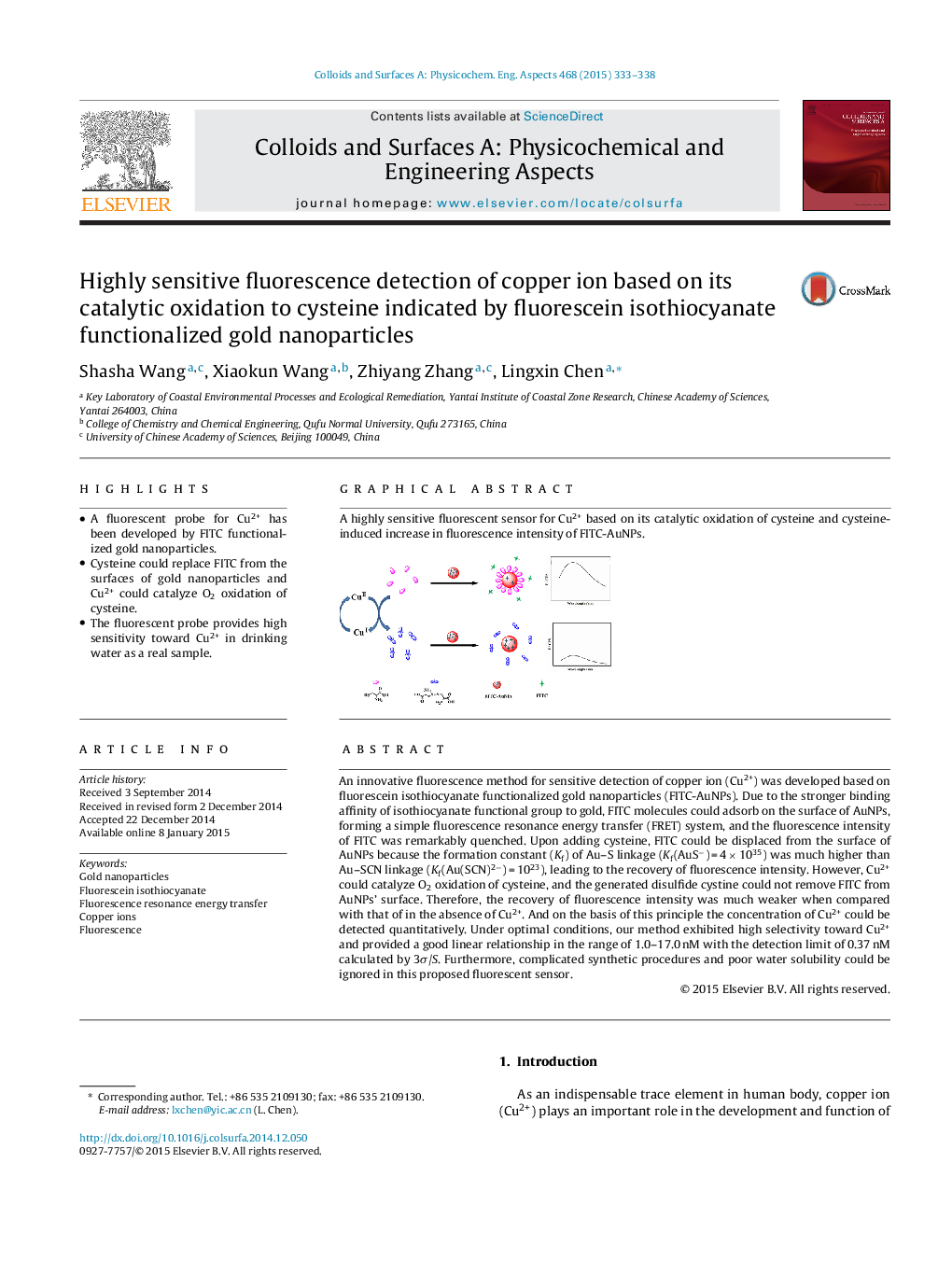| کد مقاله | کد نشریه | سال انتشار | مقاله انگلیسی | نسخه تمام متن |
|---|---|---|---|---|
| 592502 | 1453905 | 2015 | 6 صفحه PDF | دانلود رایگان |
• A fluorescent probe for Cu2+ has been developed by FITC functionalized gold nanoparticles.
• Cysteine could replace FITC from the surfaces of gold nanoparticles and Cu2+ could catalyze O2 oxidation of cysteine.
• The fluorescent probe provides high sensitivity toward Cu2+ in drinking water as a real sample.
An innovative fluorescence method for sensitive detection of copper ion (Cu2+) was developed based on fluorescein isothiocyanate functionalized gold nanoparticles (FITC-AuNPs). Due to the stronger binding affinity of isothiocyanate functional group to gold, FITC molecules could adsorb on the surface of AuNPs, forming a simple fluorescence resonance energy transfer (FRET) system, and the fluorescence intensity of FITC was remarkably quenched. Upon adding cysteine, FITC could be displaced from the surface of AuNPs because the formation constant (Kf) of Au–S linkage (Kf(AuS−) = 4 × 1035) was much higher than Au–SCN linkage (Kf(Au(SCN)2−) = 1023), leading to the recovery of fluorescence intensity. However, Cu2+ could catalyze O2 oxidation of cysteine, and the generated disulfide cystine could not remove FITC from AuNPs’ surface. Therefore, the recovery of fluorescence intensity was much weaker when compared with that of in the absence of Cu2+. And on the basis of this principle the concentration of Cu2+ could be detected quantitatively. Under optimal conditions, our method exhibited high selectivity toward Cu2+ and provided a good linear relationship in the range of 1.0–17.0 nM with the detection limit of 0.37 nM calculated by 3σ/S. Furthermore, complicated synthetic procedures and poor water solubility could be ignored in this proposed fluorescent sensor.
A highly sensitive fluorescent sensor for Cu2+ based on its catalytic oxidation of cysteine and cysteine-induced increase in fluorescence intensity of FITC-AuNPs.Figure optionsDownload as PowerPoint slide
Journal: Colloids and Surfaces A: Physicochemical and Engineering Aspects - Volume 468, 5 March 2015, Pages 333–338
